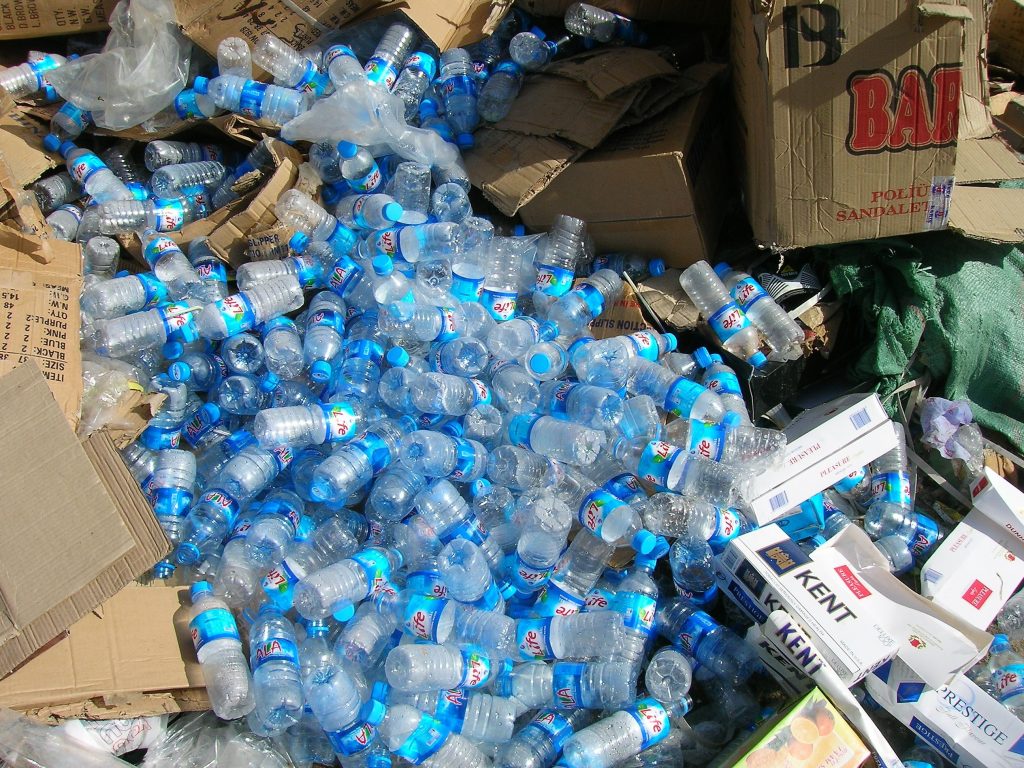Single-Use Plastics
Plastic Pollution Impacts

Single-use plastics are everywhere – from plastic bags to beverage bottles to the straw in your to-go cup and even the filter in a cigarette butt – we’re surrounded by them. While many states, and even countries, are working to ban single-use plastics, what’s already out there will continue to have long-lasting effects well beyond our lifetimes.
Plastic bottles are one of the most common single-use plastics we use. Worldwide, there are more than 1 million plastic bottles sold every minute. Plastic bottles, along with their caps, are the 3rd and 4th littered and picked up items. The creation of plastic bottles changed the beverage industry and the environment, for years to come, making it easy to transport water and keep it on hand. It wasn’t until sales of bottled water passed those of soft drinks in 2016 that the world awoke to the realization that there was too much plastic waste. Carrying a plastic water bottle was no longer cool.
Plastic bags from grocery and convenience stores are another single-use plastic polluting our land and water. They’re the 5th-most littered and collected item during cleanups. Plastic bags are often seen as a food source to many aquatic animals, especially sea turtles. Sea turtles are unable to distinguish plastic bags from one of their favorite foods – jellyfish. Plastic bags are also a challenge to recycling operations because of their thinness. If put in with harder recyclable plastics like bottles, they plug the machinery.

Slowing and Stopping Use of Single-Use Plastics

Many states and countries are working to ban single-use plastics, and plastic bottles are next in line in some areas. Some small towns have already taken the first steps, following the lead of many public parks, museums, universities, and zoos throughout the United States and Europe. Even some small developing countries have implemented bans on plastics, including Kenya and the district of South Delhi in India. Banning them for good, however, may be a challenge, because bottled water is the only source of clean drinking water in some countries.
You can make a difference in reducing single-use plastics at home by taking a few simple actions.
- Instead of buying bottled water at the store, purchase a reusable water bottled and fill it from you tap at home. Believe it or not, the water in the bottled water you buy is often the same water that comes out of your tap at home. If you’re worried about the quality of your tap water or don’t care for the taste, purchase a filter that can attach to your tap or a filtering pitcher that can go in your refrigerator.
- Invest in a few reusable shopping bags, and use them when you go shopping. Just think of all those sea turtles that won’t confuse plastic bags for jellyfish.
- When you go out to eat, pass on the straw. If you’re an avid coffee drinker, your coffee shop may offer a discount if you bring in your own reusable mug to fill.